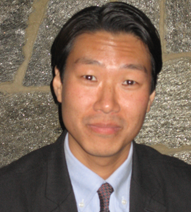
Racial Diversity and its Limits: What One Experience with Asian American Students Might Tell Us About Teaching Race
I was horrified to discover that Dylann Roof regarded Asians as inherently racist and thus possible allies to white supremacist causes. That opinion received little media attention, except for spotty clusters throughout social networking sites. And while Roof’s assessment of Asians is nothing short of galling, I also found them disquieting; it was the words of a white supremacist mad man that had uncomfortably recalled a specific set of experiences in my course “Race, Politics, and Theology.”
Students in my course have mirrored the relative racial and ethnic diversity of Seton Hall. Yet, disappointingly, the class discussions have not been entirely what I had hoped for. African American students on average were more engaged than many of their white classmates who appeared mindful not to sound racist (though in their papers some would let loose a tad). What surprised me, however (naively, I’ll now admit), was the level of disagreement among my African American, as well as Latino/a, students; a few even seemed as ambivalent about race as some of their white classmates. Equally surprising (naively, again!) was the relative silence of my small group of Asian American students (mostly South Asian and Filipino). Their lack of participation has been a particular concern of mine. Initially, I found it deeply frustrating; I kept thinking, why aren’t they talking about the ways in which white racism disciplines Asian American life? Model minority, bamboo ceiling, perpetual foreigner, or colonialism in Asia, anyone? Was I asking too much of 19 and 20 year olds?
Over the past few years, it has become clearer to me that the reticence of my Asian American students was more accurately an inability to talk about race, stemming from a sense that the narrative of racism in the U.S. was not quite their narrative. This is not an attitude assumed by all Asian Americans! But in the classroom, what I had relearned was that for many Asian Americans, particularly those from immigrant families and enclaves, at least in N.J./N.Y.C., even if they acknowledged experiences of discrimination, racism in the U.S. was often considered someone else’s problem (namely, between whites and blacks).
Such an attitude in some Asian American communities is not, I believe, as innocent and plausible as it may sound, but rather buoyed, often unnoticed, by the interests of white ideologies of power and class (this is especially acute in the racial identity preferences of multiracial Asians). To that extent, I believe Asian Americans need to, collectively, develop greater capacities for self-criticism and awareness. The last time I taught the course, I almost gave up on my Asian American students until we came across a somewhat obscure passage from James Cone’s A Black Theology of Liberation late in the semester. It was only then that they began to open up about race in a way they had not before; the normative push of whiteness became more apparent in their lives, especially as they discussed skin whitening and other cosmetic surgery procedures many Asian Americans favor to look more “American” (a.k.a. “White”).
In recounting this class experience, I don’t mean to suggest that I found a particularly effective method for facilitating finer racial self-awareness, especially among my Asian American students. In previous semesters, the topic of race and cosmetic surgery elicited nothing from students except bewilderment. But that one lively, serendipitous discussion reminds me that racial insight is not a “logical” outcome of a racially diverse classroom. Moreover, being nonwhite doesn't imply being obviously attuned to the ways in which whiteness disciplines our collective and individual lives. That doesn't mean that racial and ethnic diversity is something we shouldn’t strive for in higher education—on the contrary, we should! But it does mean that we need a more sober and honest account of the kinds of opportunity such diversity in itself can engender. Part of that appraisal has to include revising what we mean by racial and ethnic diversity and, correlatively, the recognition that with genuine diversity comes a diversity of social and cultural perspectives, which in some cases are less than mutually supportive. While unsettling, maybe that's what Dylann Roof understood in some twisted way and had hoped to exploit for nefarious purposes.
A diverse class may yield greater awareness of and resistance to racist ideologies, but it can also lead to mere social politeness, or avoidance of the problem. An overlooked benefit of racial diversity may be that it offers an opportunity to witness a difficult racial truth: to the extent that it has woven itself into the very fabric of American life, white ideologies of power and class can just as easily pull the wool over the eyes of even those we might think have a more privileged access to the social realities of race. In the classroom, that truth may require pedagogies that are far more radical than those we have imagined thus far.